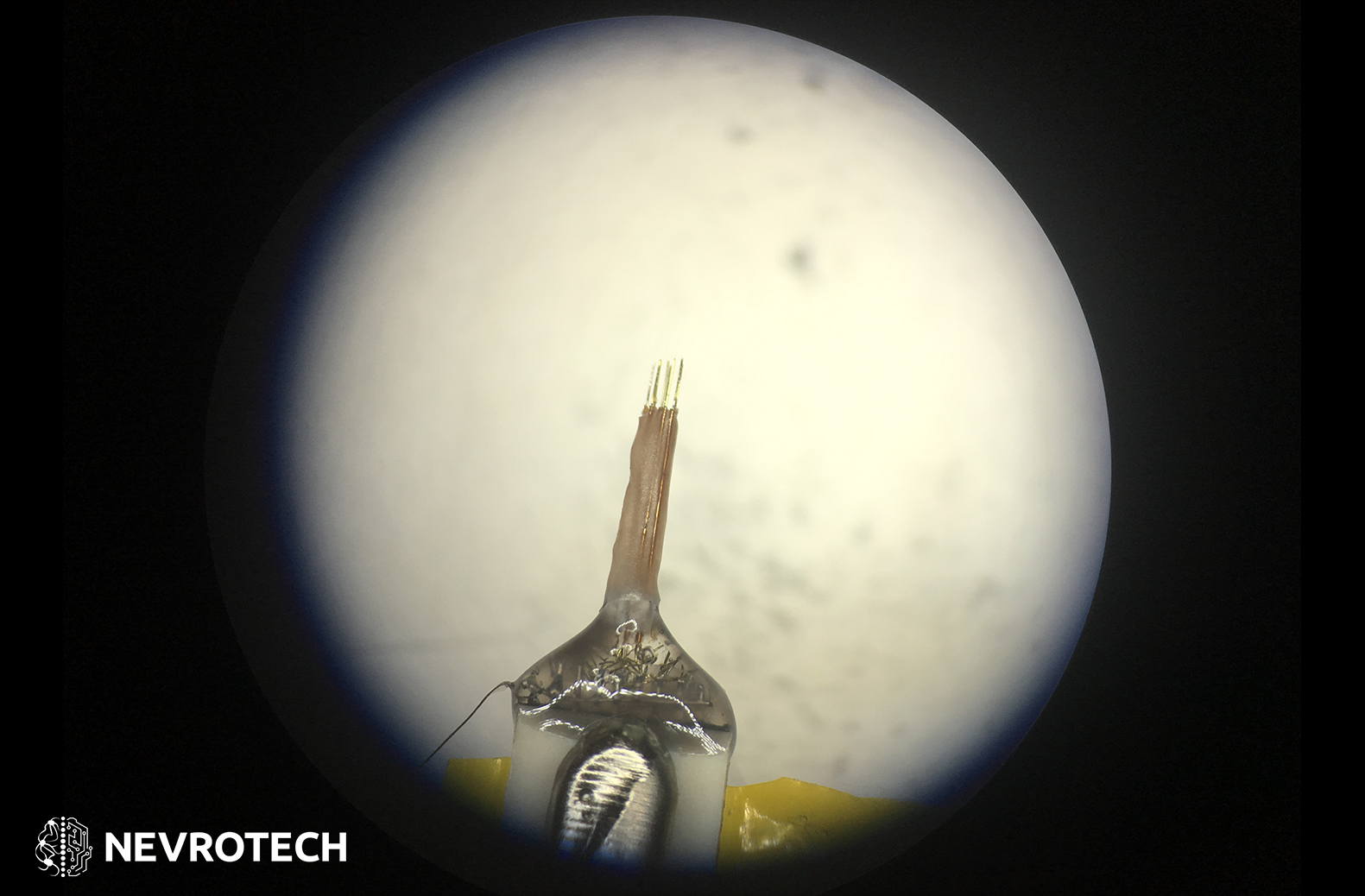Microwire Arrays are designed for both short- and long-term neural recordings in rodent, feline, bird and primate research.
Strengthened Microwire Arrays - SMWA
Their recording reliability stems from a sound construction, which is also highly customizable. Tailoring options include: number of electrodes and rows, length and spacing, insulation and connectors, among others.
The Stainless Steel or Platinum/Iridium wires are individually cut to length and Polyethylene Glycol (PEG) ensures the stable arrangement of the wires while advanced into the target tissue. PEG may be easily washed-off with saline during the insertion process. Such approach allows to researcher for effective deep brain penetration. We offer Polyimide, Borosilicate and Fused Silica capillaries for mechanically strengthening the individual electrodes of the Microwire Array for accessing deeper brain structures.
Microwire Arrays are designed for both short- and long-term neural recordings in rodent, feline, bird and primate research.
Their recording reliability stems from a sound construction, which is also highly customizable. Tailoring options include: number of electrodes and rows, length and spacing, insulation and connectors, among others.
The Stainless Steel or Platinum/Iridium wires are individually cut to length and Polyethylene Glycol (PEG) ensures the stable arrangement of the wires while advanced into the target tissue. PEG may be easily washed-off with saline during the insertion process. Such approach allows to researcher for effective deep brain penetration. We offer Polyimide, Borosilicate and Fused Silica capillaries for mechanically strengthening the individual electrodes of the Microwire Array for accessing deeper brain structures.
Microwire Arrays are really made to your specification. They can also incorporate fiber optics and/or drug delivery cannula for precise optogenetic stimulation and local drug administration. It may also be possible to produce these probes beyond the listed parameters to accommodate the most ideal configuration for your research needs.
- Primarily used for chronic recordings
- Rodent, feline, bird and primate research
- Highly customizable design
- Custom reference and ground electrodes
- Strengthened structure for deep brain penetration
- Capillary and fiber options
- Up to 64 wires and 6 connectors
GENERAL
| Ideal method of use | Acute and chronic |
| Application method | In vivo |
| Research phase | Pre-clinical |
| Subject | Rodent, feline, birds and primates |
ELECTRODE WIRES
| Tip angle (°) | Not tapered (cut end) |
| Material | Stainless Steel, Platinum/Iridium |
| Insulation | Polyimide, Teflon |
| Diameter (µm) | 25, 50, 75 |
| Number of electrodes | 4-64 |
| Number of rows | 1-12 |
| Inter-electrode spacing (µm) | 150-2000 |
| Inter-row spacing (µm) | 150-2000 |
| Electrode configurations | 1×2, 2×3, 4×4, 2×8, 4×8, etc. |
| Impedance (kΩ) | 50-1000 (per wire) |
| Epoxy Blob | Optional |
| Security of arrangement | PEG, Polyimide, Borosilicate and Fused Silica capillaries |
| Wire Length (mm) | 5-23 (different length for each wire may be possible) |
| Epoxy length below connector (mm) | 2-6 |
| Wire length covered with PEG (mm) | 1-23 (5 is typical) |
| Wire length exposed beyond PEG | 1-10 (2 is typical) |
| Ferromagnetic | Y (non-MRI compatible) |
OTHER
| Ground Wire | Optional (Stainless Steel, typically positioned at the base of the connector) |
| Ground wire length (mm) | Up to 150 |
| Reference wire | Optional (material as for the electrode wires) |
| Capillary fluid channel | Y (acute only) |
| Fiber Optics | Y (acute only) |
| Connector types | Omnetics |
| Number of connectors | 1-6 |
| Lifespan | Recording from 1 subject (chronic) |
You may find downloadable content under Resources.
